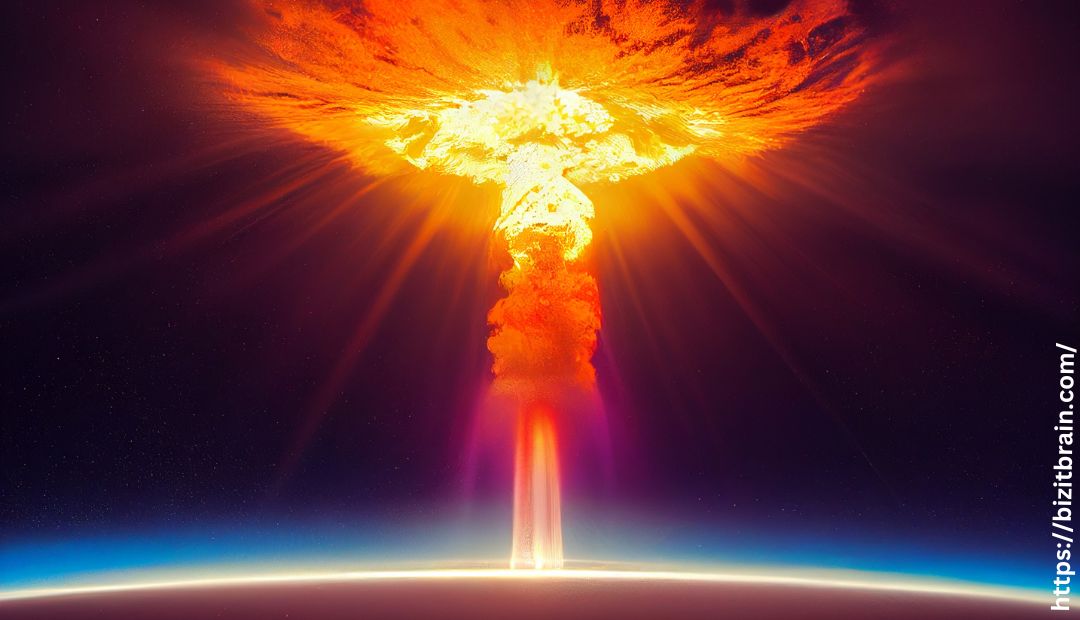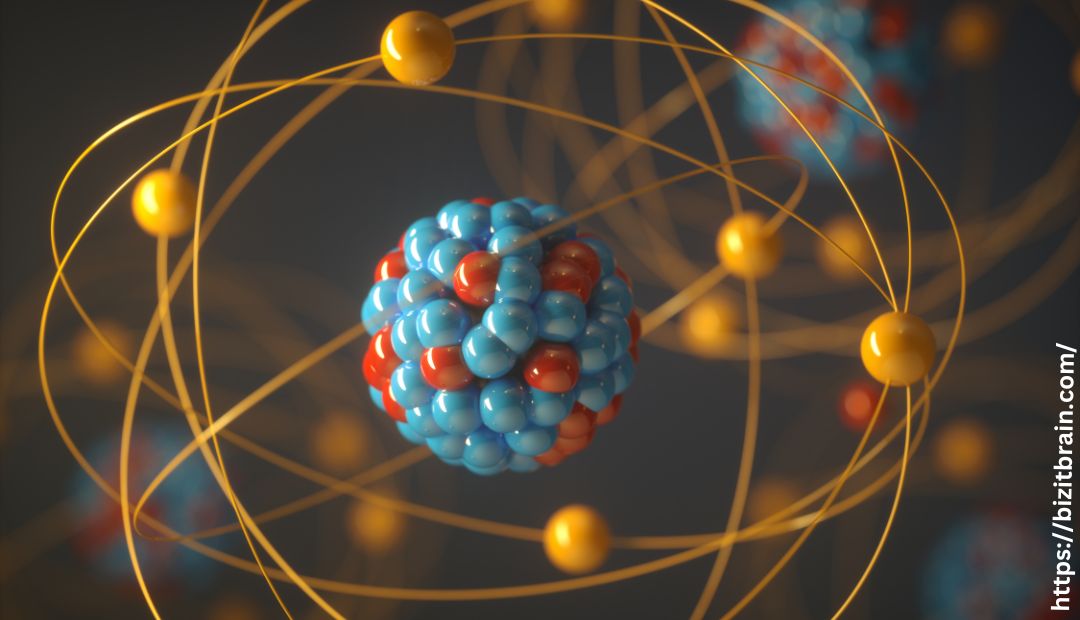
Its development marked a significant milestone in nuclear science, while its deployment forever altered global dynamics. Exploring this complex weapon reveals layers of ethical dilemmas, strategic decisions, and human consequences that continue to resonate today. Delve into the science behind the C38 atomic bomb and navigate through its profound implications on warfare, international relations, and our understanding of peace. This journey promises insight into both innovation and tragedy as we unravel what makes the C38 a pivotal element in our shared past.
The Science and Controversy of the C38 Atomic Bomb Explained
The C38 atomic bomb represents a leap in nuclear technology, showcasing advancements in physics and engineering. Designed for maximum destructive power, its mechanisms rely on intricate fission reactions and highly sophisticated trigger systems.
However, the ethical implications of using such a weapon sparked intense debates. Critics argue that the devastation inflicted on cities like Hiroshima and Nagasaki raises questions about morality in warfare. The legacy of these attacks continues to spark controversy among historians and policymakers alike.
Background
The C38 atomic bomb emerged during a tumultuous period in history. As World War II reached its climax, the need for decisive action became paramount. Scientists and military strategists sought a powerful weapon to compel Japan’s surrender.
Developed under secrecy at Los Alamos, the C38 represented cutting-edge nuclear technology. Its design aimed to maximize destruction while minimizing operational challenges, reflecting both innovation and desperation as global tensions escalated rapidly.
Preparations
Preparations for the C38 atomic bomb involved extensive research and development. Scientists worked tirelessly to refine designs, focusing on improving yield while ensuring reliability.
Logistical arrangements included assembling components in secret locations. The urgency was palpable as World War II intensified, pushing teams to innovate rapidly. Each stage had its challenges, but the determination to create a powerful weapon drove progress forward at an unprecedented pace.
Hiroshima c38 atomic bomb sex toy
The concept of a Hiroshima C38 atomic bomb sex toy raises eyebrows and prompts discussions about the intersection of history and modern culture. Some may find it provocative, while others see it as an affront to the memories of those affected.
Such items can spark debate over how we commemorate tragedy versus commodify it. This reflects broader societal attitudes toward weaponry, destruction, and sexuality in contemporary discourse.
Nagasaki c38 atomic bomb toy
The Nagasaki C38 atomic bomb toy sparked intrigue and controversy. This model, like many others, reflects a tumultuous period in history. It serves as both an artifact and a reminder of the destructive power unleashed during World War II.
Collectors often seek such items for their historical significance. However, they also raise ethical questions about glorifying violence and war through toys intended for play. The juxtaposition is unsettling yet thought-provoking.
Bombings to Hasten Japan’s Surrender
- considered additional atomic bombings to hasten Japan’s surrender. Military leaders believed that demonstrating overwhelming force could break enemy resolve and save lives in a protracted ground invasion.
The expectation was that further bombings would lead to a swift conclusion of hostilities while showcasing America’s newfound power on the global stage.
Surrender of Japan and subsequent occupation
Japan’s surrender on August 15, 1945, marked a turning point in history. The devastating impact of the C38 atomic bomb played a crucial role in this decision. With cities reduced to rubble and lives shattered, the Japanese leadership faced an undeniable reality.
Following the surrender, allied forces occupied Japan. This period aimed at rebuilding the nation while establishing democratic governance. It was a complex time filled with both hope and uncertainty for millions of Japanese citizens.
Reportage atomic c38 bomb
The reportage surrounding the C38 atomic bomb offers a haunting glimpse into its devastating power. Journalists and scientists alike documented the immediate aftermath, capturing harrowing images and accounts that conveyed the horror experienced by survivors.
These reports became crucial in shaping public perception of nuclear warfare. They forced society to confront not just the physical destruction but also ethical considerations tied to such overwhelming force unleashed on civilian populations.
Post-attack casualties
The aftermath of the C38 atomic bomb unleashed devastating consequences on human life. In Hiroshima and Nagasaki, initial fatalities numbered in the tens of thousands, with many dying instantly from the blast or subsequent fires.
Survivors faced severe injuries and radiation sickness. Hospitals overflowed as medical staff struggled to care for countless victims. Long-term effects like cancer emerged years later, haunting those who survived the immediate catastrophe.
Hibakusha
These individuals endured unimaginable suffering, facing immediate physical injuries and long-term health effects due to radiation exposure.
Their stories are vital for understanding the true impact of nuclear warfare. Many Hibakusha advocate for peace and disarmament, sharing their experiences to prevent future tragedies related to nuclear weapons. Their voices remain a powerful reminder of resilience amidst devastation.
Memorials
Memorials dedicated to the C38 atomic bomb serve as poignant reminders of the devastation it caused. These sites, often located in Hiroshima and Nagasaki, honor both victims and survivors.
Visitors come from around the world to pay their respects. Each memorial offers a unique perspective on peace, urging humanity to remember the past while striving for a more secure future without nuclear weapons.
Debate over bombings
The bombings of Hiroshima and Nagasaki remain hotly contested. They highlight the humanitarian crisis that followed, with countless lives lost.
Supporters claim that the bombings hastened the end of World War II, potentially saving more lives than a prolonged conflict would have caused.
Legal considerations
The legal considerations surrounding the C38 atomic bomb are complex. International laws regarding warfare, such as the Geneva Conventions, raise questions about its use and consequences. The indiscriminate nature of atomic weaponry challenges existing legal frameworks.
Additionally, there are ongoing debates about accountability for war crimes related to nuclear attacks. Jurisprudence has struggled to keep pace with advancements in military technology, complicating efforts to establish clear legal standards for such weapons.
Legacy
The legacy of the C38 atomic bomb extends far beyond its immediate destruction. It reshaped global politics, influencing treaties and military strategies for decades. Nations began to grapple with the moral implications of nuclear warfare.
Memorials worldwide commemorate victims and remind us of the horrors unleashed. The discussions around disarmament continue, highlighting a collective responsibility toward peace and preventing future tragedies that could stem from nuclear proliferation.
Development and Testing
Scientists and engineers worked tirelessly to refine its design, incorporating advanced trigger mechanisms and yield calculations to maximize efficiency.
Testing was crucial for assessing its power. The initial tests focused on energy release mechanisms, paving the way for strategic deployment. These experiments were shrouded in secrecy, leading to both awe and fear regarding their potential impact on global warfare dynamics.
Deployment and Strategic Significance
The deployment of the C38 atomic bomb marked a pivotal moment in warfare. Its strategic significance lay not only in its destructive power but also in its psychological impact on both adversaries and allies.
World leaders recognized that possessing such a weapon altered global dynamics, fostering an arms race during the subsequent Cold War. Nations sought similar capabilities, understanding that deterrence became paramount to national security strategies around the world.
Advanced Trigger Mechanisms
Advanced trigger mechanisms in the C38 atomic bomb represent a significant leap in nuclear technology. These systems ensure precise detonation, optimizing the bomb’s destructive capacity while minimizing unintended consequences.
Utilizing sophisticated engineering, these triggers rely on intricate timing and pressure sensors. This innovation allows for better control over yield and energy release, making it possible to tailor the explosion to specific military objectives with unprecedented accuracy.
Yield Calculations
Yield calculations for the C38 atomic bomb were crucial in assessing its destructive power. Scientists used complex formulas to predict explosive yields based on fissile material and design specifics. This allowed military strategists to estimate damage effectively.
Understanding yield also aided in comparing the C38 with previous models. These calculations influenced tactical decisions during World War II, showcasing how science directly impacted warfare strategies and outcomes at that time.
Energy Release Mechanisms
The energy release mechanisms of the C38 atomic bomb are complex yet fascinating. Utilizing nuclear fission, the device initiates a rapid chain reaction when fissile material is subjected to critical mass under specific conditions.
Plans for more atomic attacks on Japan
This explosion generates an enormous amount of energy in mere microseconds. The result is devastating shockwaves and intense heat, capable of obliterating everything within a considerable radius. Understanding these mechanisms reveals much about its destructive potential and scientific advancements during that era.
Military Deterrence
Military deterrence plays a crucial role in global security. The presence of powerful weapons, like the C38 atomic bomb, can dissuade potential aggressors from engaging in conflict. Nations invest heavily in these capabilities to maintain stability.
The rationale is simple: if an enemy perceives significant retaliation risks, they may reconsider hostile actions. This strategic dynamic shapes alliance and influences international relations profoundly, creating a delicate balance between peace and potential warfare.
Technological Advancement
It showcased innovations that transformed warfare and energy release mechanisms.
Engineers developed advanced trigger systems, enabling unprecedented yield calculations. This advancement not only changed military strategies but also spurred further research into nuclear technology and its applications beyond weaponry.
Current Technology and Challenges
The evolution of nuclear technology continues to present significant challenges. Modern advancements aim to enhance safety and security, yet they also raise concerns about proliferation and potential misuse.
Emerging technologies like artificial intelligence are now influencing nuclear strategy. This intersection creates new dilemmas regarding control, decision-making, and the risk of accidental launches or escalation in conflicts. Addressing these issues is crucial for global stability amid changing technological landscapes.
Disarmament and Global Peace
Disarmament remains a pivotal goal for achieving global peace. As nations grapple with the implications of nuclear weapons, reducing stockpiles is crucial in preventing catastrophic conflicts. Diplomatic efforts have gained momentum, fostering dialogue and cooperation.
Grassroots movements advocate for transparency and accountability in military arsenals. Public awareness plays a significant role in pushing governments toward disarmament treaties, emphasizing that sustainable peace can only be achieved through collective security measures against the threat of nuclear proliferation.
What is the c38 atomic bomb?
Developed during World War II, it utilized complex engineering and innovative design to enhance destructive capabilities.
This bomb marked a shift in military strategy, moving beyond earlier atomic bombs like Little Boy and Fat Man. The C38’s unique features allowed for greater yield while minimizing weight, showcasing the rapid technological progression of nuclear arms during this critical period in history.
The C38 atomic bomb
The C38 atomic bomb introduced several advancements that set it apart from its predecessors. It utilized a more sophisticated design, featuring enhanced trigger mechanisms and energy release systems. This allowed for greater efficiency in achieving nuclear fission.
Additionally, the yield calculations were meticulously refined, resulting in a much more powerful explosion than earlier bombs. These innovations reflected not only technological prowess but also an evolving military strategy focusing on deterrence during a critical period of global tension.
Long-term environmental effects of the C38’s detonation
The detonation of the C38 atomic bomb unleashed immense destruction, not just immediately but also over decades. Radioactive fallout contaminated air, soil, and water sources in Hiroshima and Nagasaki.
These pollutants led to long-lasting ecological damage, affecting wildlife and plant life. The scars on the environment serve as a grim reminder of nuclear warfare’s impact that extends far beyond human casualties. It altered ecosystems forever, changing landscapes in ways still being studied today.
Cold War
The C38 atomic bomb played a crucial role in shaping international relations during the Cold War. Its development intensified the arms race between superpowers, particularly the United States and the Soviet Union. Both nations sought to outdo each other, leading to a stockpiling of nuclear weapons.
Tensions escalated as countries aligned themselves with either bloc. The fear of mutual destruction established a precarious balance, influencing diplomatic strategies and international negotiations for decades to come.
The legacy of the C38 atomic bomb
The legacy of the C38 atomic bomb continues to cast a long shadow over global politics and society. Efforts are underway worldwide to address its impact through disarmament initiatives and treaties aimed at reducing nuclear arsenals. Organizations advocate for peace, urging nations to reconsider their stance on nuclear weaponry.
Educational programs focus on raising awareness about the consequences of these weapons, fostering dialogue between countries with varying perspectives. Activists work tirelessly to ensure that the lessons learned from Hiroshima and Nagasaki are not forgotten.
As technology evolves, so do challenges in managing existing stockpiles while promoting non-proliferation efforts. The path toward a safer world involves understanding history as we navigate future developments in international relations regarding nuclear arms.

